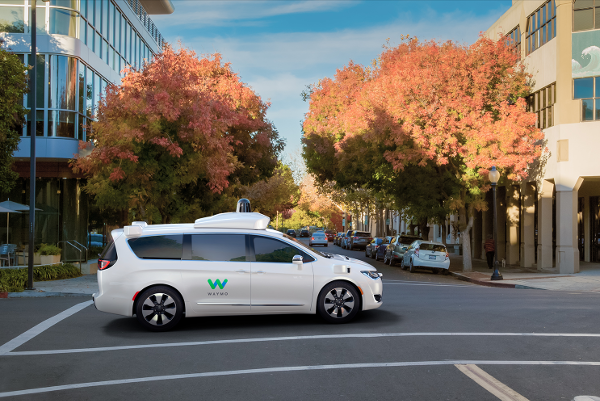 EMERGING TECH
EMERGING TECH
 EMERGING TECH
EMERGING TECH
 EMERGING TECH
EMERGING TECH
Waymo has opened up about the self-driving vehicles undergoing trials at its secretive test facility in California’s Central Valley.
On Monday, the subsidiary of Google LLC owner Alphabet Inc. held a press briefing at the former Air Force base where the operation is based to give the public a rare look inside. The 91-acre site is reportedly crisscrossed by roads with traffic lights, intersections, a railroad crossing and many of the other sights that one would expect to see on a real highway. This elaborate track is set up for a fleet of heavily customized Chrysler Pacifica minivans (pictured) that navigate their way around the site without any human assistance.
As part of the trails, Waymo performs what is referred to internally as structured testing. Staffers place the minivans in the kind of tricky situations that they would have to deal with on a real road, such as getting cut off by a reckless driver or having to navigate around obstacles. These trials are repeated over and over to hone the onboard artificial intelligence’s driving skills.
Waymo seems to be making good progress. According to TechCrunch, a small animal ran in front of a minivan at one point during the demonstration and led the vehicle to slow down automatically out of caution. The incident would suggest that the Alphabet subsidiary’s AI can handle situations it was not specifically trained to deal with during the structured testing sessions. This is a positive sign, certainly for the participants taking part in Waymo’s field trial in Phoenix, not to mention the animals nearby.
Inside a Waymo minivan, two features stand out the most for passengers. The first is a panel fixed to the ceiling that features four buttons. One places a call to support staff, another controls the doors and a third can be used to start a ride. The fourth and final button, which instructs the vehicle to pull over, was not ready for use during the demonstration.
The other main highlight is the pair of displays on the back of the front seat headrests. They provide a live stream from the minivan’s sensors that is filtered to make the raw measurements more easily digestible.
The feed visualizes the buildings, cars and other objects that the vehicle passes in an angle synced with the passenger’s point of view. At the same time, an overlay shows related information such as what action the minivan is taking at any given moment.
The practical purpose of the displays is to make users more comfortable about being in a car with no driver. Although it doesn’t receive as much attention as the safety concerns around autonomous vehicles, addressing this piece of the puzzle will likely be just as important to achieving mainstream adoption.
THANK YOU